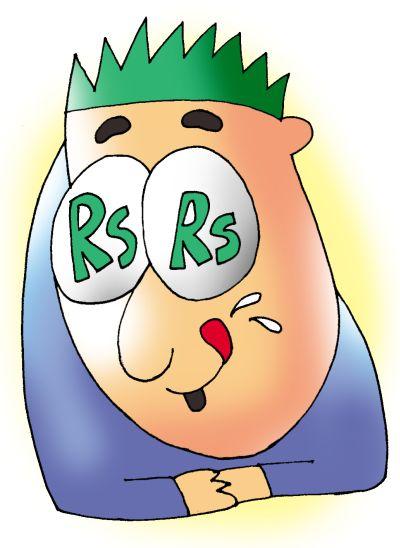Photographs: Uttam Ghosh/Rediff Lokesh Kumar and Nupur Pavan Bang
Lucky was fascinated by the world of stock markets. He had started investing the money made from his stock options in equities a few months back.
The stocks were mostly selected based on recommendations made by analysts on business news channels and the newspapers.
Having lost 60 per cent of his principal invested in a particular stock, he decided to take matters in his own hands and learn about stock selection rather than depend on other. With determination in his eyes, he knocked at Professor Nicky's door.
Nicky: Good to see you Lucky. What brings you here?
Lucky: Professor, I invested in a stock based on a recommendation, where the analyst had used Price-To-Earnings (P/E) multiple. Before you accuse me of blindly following the analysts, let me clarify that I did Google the term, did my own analysis and then took a call to buy.
Nicky: The dark side of valuation!
…
Don't trust stocks experts! Here's how to do your own research
Photographs: Uttam Ghosh/Rediff
Lucky: What do you mean?
Nicky: Let me elaborate. The same multiple can be defined in different ways by different people. Multiples can be misleading if you don’t know what fundamentals drive each multiple and how the multiples are estimated.
Price to earning is not the only multiple, though it is the most common. There are numerous multiples that exist.
A multiple is simply a ratio of two financial variables where enterprise value (measure of market value of all the securities, viz. common stock, preference stock etc., of a company) and equity market capitalisation (measure of market value of just common stock) are used in numerator and various proxies for cash flow are used in denominator such as Earnings Before Interest and Tax (EBIT), Earnings Before Interest Tax Depreciation and Amortisation (EBITDA), Book Value, Sales, Employees, etc.
…
Don't trust stocks experts! Here's how to do your own research
Photographs: Uttam Ghosh/Rediff
Lucky: But how do we know which is the right multiple to use for a company? This analyst always uses P/E Multiple.
Nicky: Keep in mind that you can’t use these numerators interchangeably to define a multiple. When the denominator is an enterprise level quantity such as EBIT, EBITDA, Sales or employees, you should use the enterprise value in the numerator; and when the denominator represents the shareholder level measure such as earnings or book value of equity, you should use equity market value in the numerator.
Lucky: That makes sense. But you did not answer my question. I am wondering whether any specific multiple is used for a particular industry.
Nicky: Yes. Some multiples make more sense for a certain industry than the other multiples. For example, Price/Customer multiple can be used to value Cellular phone and Internet companies while Price/unit multiple is suitable for soft drinks and consumer product companies.
Price to Earnings ratio is generally used for growth Industries such as technology, health and luxury goods.
…
Don't trust stocks experts! Here's how to do your own research
Photographs: Uttam Ghosh/Rediff
Lucky: What about Banks?
Nicky: Price/Book value is the more appropriate multiple for valuing a Bank. However, you must realise that when valuing a company using multiples, average multiple of the rest of the companies in the industry or few select companies in the industry is used.
If the company which you are valuing, is very different from the other companies in terms of size, geographical area of operation, growth prospects or technology used, you may not get a meaningful value for the company using multiples.
Lucky: What about other valuation techniques?
Nicky: There are many. Discounted cash flow method, dividend discount model, moat based valuation, etc. The key is to figure out which model is best suited to the company, which you want to value.
Lucky: Now, I realise why you earlier said, “The Dark side of valuation”.
Nicky: Yes. While valuation can be tricky, it is still better to invest with 'informed ignorance' than total ignorance.





article